
The tile is, undoubtedly, the most popular material for wall decoration and floor in the bathroom. And there are many objective reasons for it: it is easy to wash, it is resistant to moisture and direct moisture ingress, it is hygienic and environmentally safe. It is always very responsible for the choice of floor and wall ceramic tiles.

However, how to end up your bath will look after the repair and how long the tile will serve you, it depends not only on the quality of the tile itself and the craftsmanship of the builder who will lay it. The end result largely depends on the quality of related products, such as tile grout. One who has never been dealing with the laying tile may not even know about her purpose. In this article we will tell you why we need a tile molding, which thicker mixtures are and how to use it.
Purpose of Zatir
The tile grout is a dry building mixture that can be both cement and epoxy based. The grout is used to fill the seams between the tiles. This is done not only from the aesthetic considerations, but also so that moisture does not fall into the seams and mold and bacteria did not accumulate.
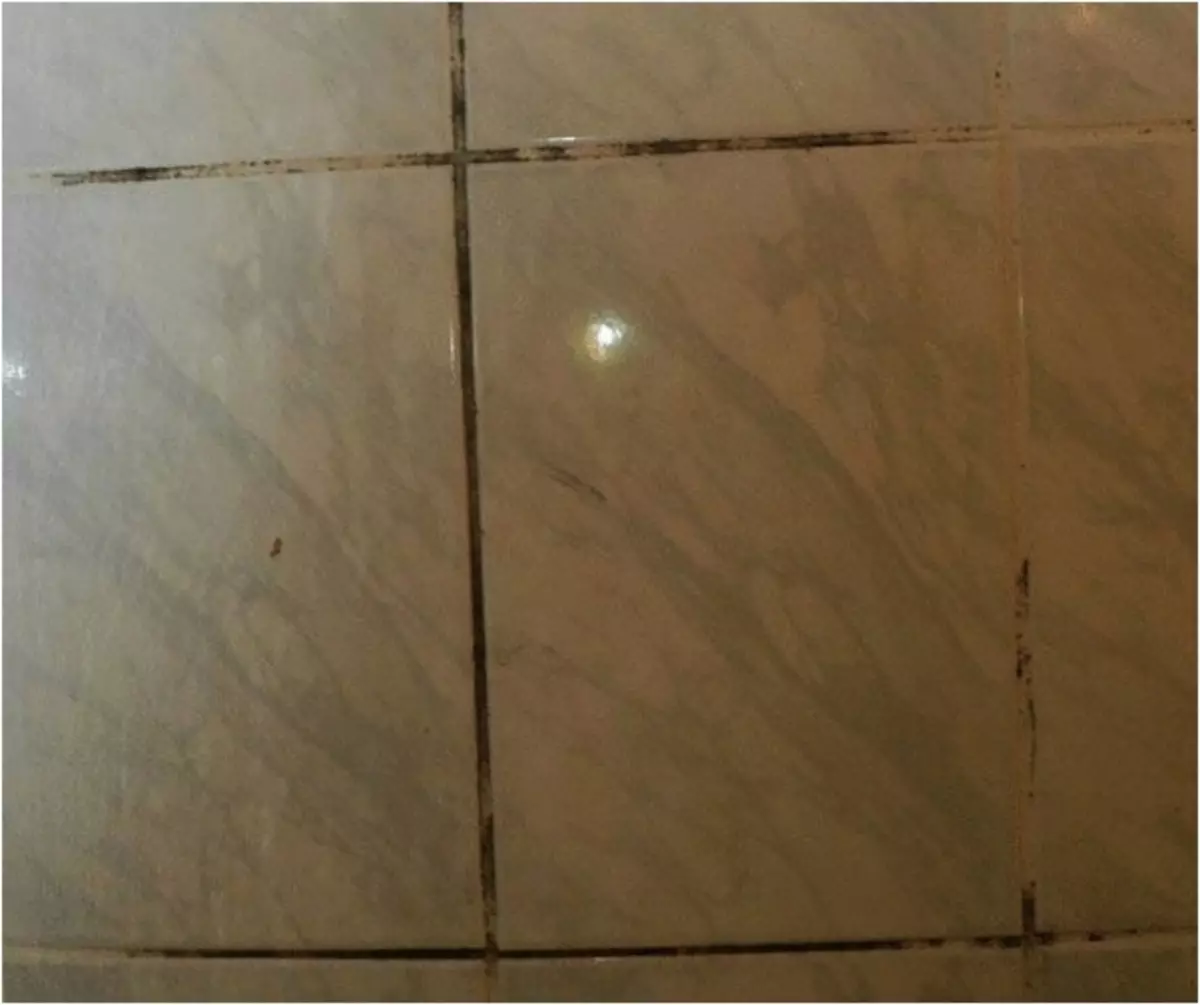
In addition, the correctly selected grout will be able to help hide defects formed due to uneven walls or improper laying of tiles.
What do you need to know before choosing a grout?
Before you go to the store for grouting for seams, you should consider that the grouts are divided into two main types, depending on The main component of the mixture: grouts on a cement basis and grout based on the resin (in particular, epoxy resin).
Cement base is greater popular with consumers. This is primarily due to its lower cost. In addition, it is easier to work with cement grout. It is enough to dissolve a dry mixture with water or water-based latex to the desired consistency. However, in some cases, the grouts are sold already in prepaid for use in plastic buckets.
It should be borne in mind that, although it is more convenient to use the finished mixture, it is less economical than using a dry mixture. The fact is that the finished mixture will dry very quickly and if you do not have time to use everything bucket shortly after opening, the remains of the mixture quickly solidify and you will have to throw them out.
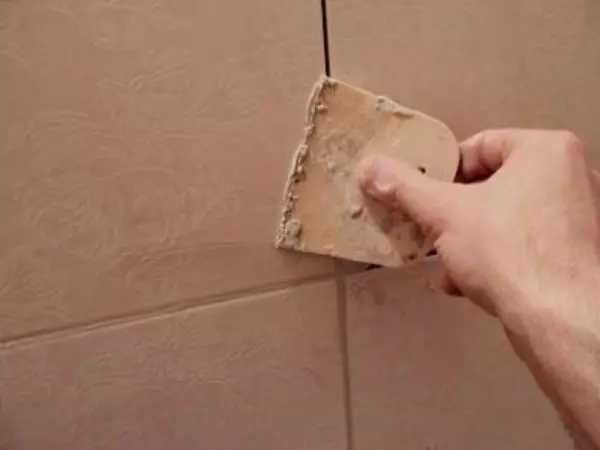
Among the resin-based raven is the most common grout based on epoxy resin. There are other grouts, for example, based on furan resin. However, they are rarely used in the interior decoration. For example, furana resin-based grouts are used mainly at industrial enterprises in difficult production conditions. Epoxy grouts are used everywhere.
Article on the topic: What kind of design ceiling can be done in the hall with your own hands?
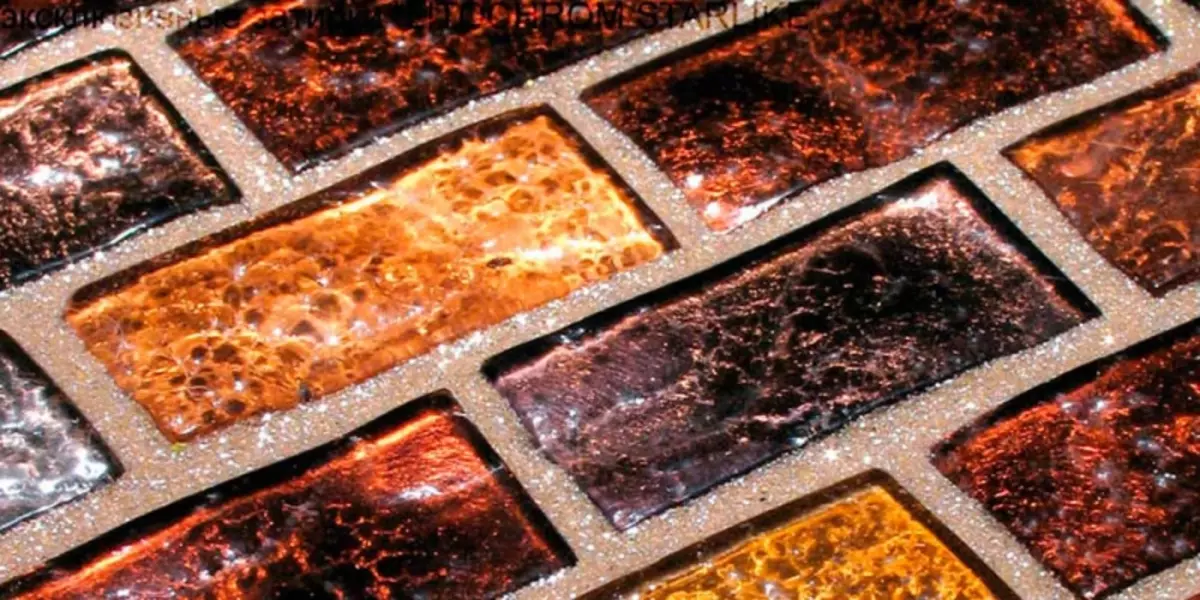
How to choose the correct grout composition?
Criteria for selecting cement and epoxy grouts are somewhat different.
Cement Zatirki. Can be intended for work with narrow seams (up to 5 mm) or with wide seams (more than 5 mm). If you have to work with wide seams, you will need to purchase grout with sand. Moreover, the wider seam between the tiles, the larrhest should be the sand in the mixture. Some cement mixtures also add special chemicals designed to struggle with the formation of mold and fungi - fungicides.
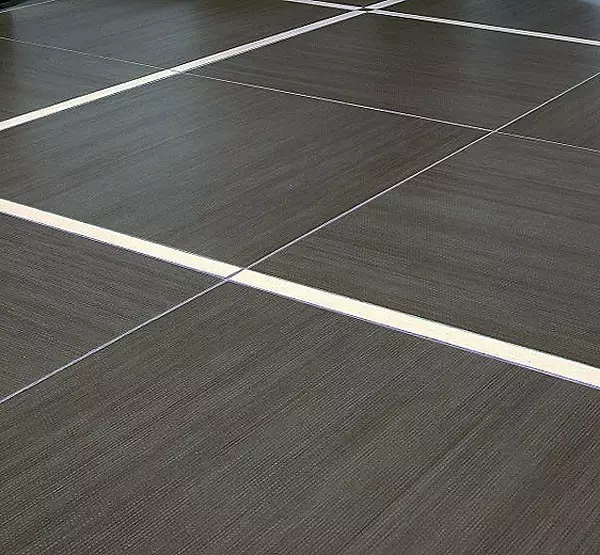
Most experienced tile counters advise, still give preference to epoxy grouts in the bathroom, Since they, in contrast to cement rates, are not destroyed under the influence of chemicals and more resistant to different kinds of pollution. However, cement grouts are also suitable for floor tiles.
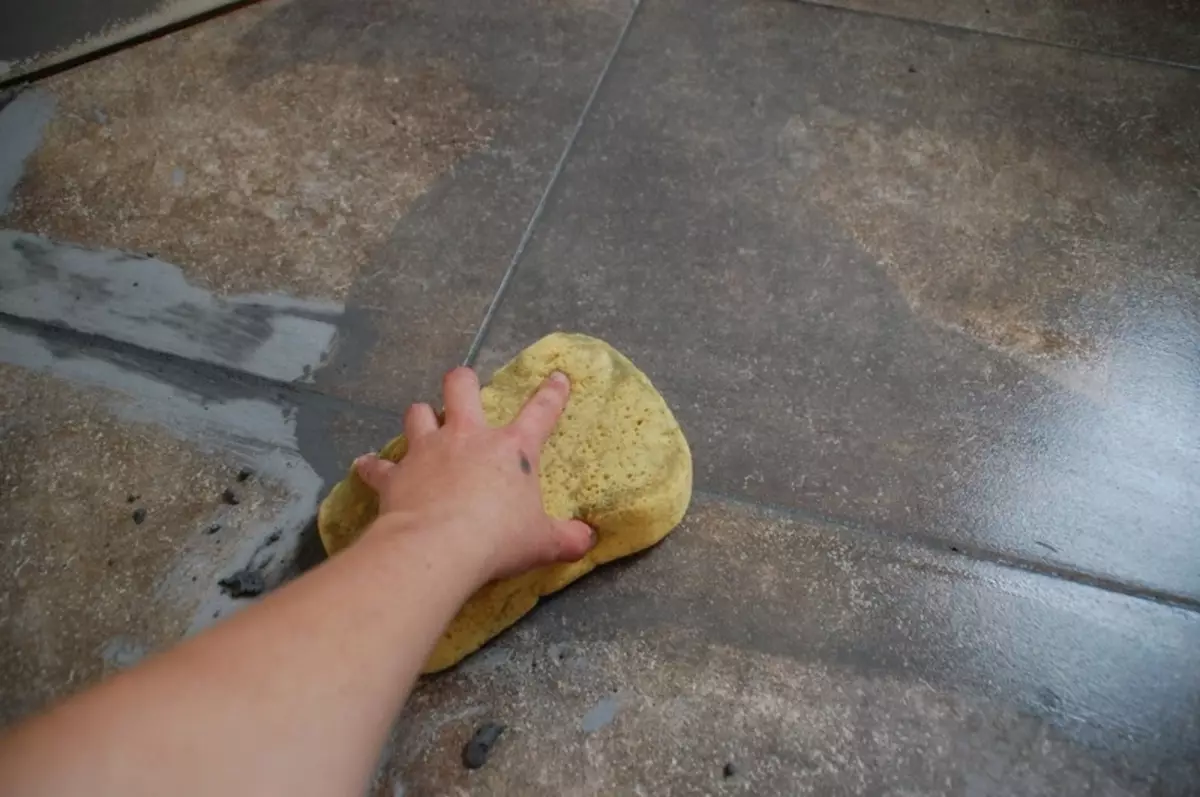
If you still decide to use cement grout, we advise you so to purchase a hydrophobizer - a special composition that gives the surface of the water-repellent properties treated.
As we have already noted, among the resin-based rates The optimal option is the raises based on epoxy resin . It includes epoxy resin, hardener and coloring component. There is also a so-called two-component grout, which consists of cement, which is divorced by a latex plasticizer. Such grout is much stronger than others, and is usually used on the facades of buildings.
Color mixes
The grout color is selected based on the tile color.
Cement grout can be both natural gray and any other color, from white to black, depending on the color pigment used. If you could not find the necessary shade of the finished mixture, you can create it yourself, purchasing a white grout and color kel to it.
The choice of epoxy grout is significantly wider, but it is impossible to paint on an epoxy basis independently. Thanks to the addition of brilliant components, manufacturers were able to achieve the effect of gold, silver, bronze, metallic. The range is really impressive.
Article on the topic: Art Vinyl Flooring: This is the floor, photo and laying, video and tarkett creative, linoleum modular
When choosing a grout color, you must be guided by two simple rules.:
- Dark and contrast grout should only be used if you are sure that the tile lies perfectly. The fact is that such oppression of colors emphasizes the drawing of the tile laying.
- If during the stacking tiles there were some errors, it is better to use a light grout. In this case, the darker color of the tile will visually hide the existing irregularities.
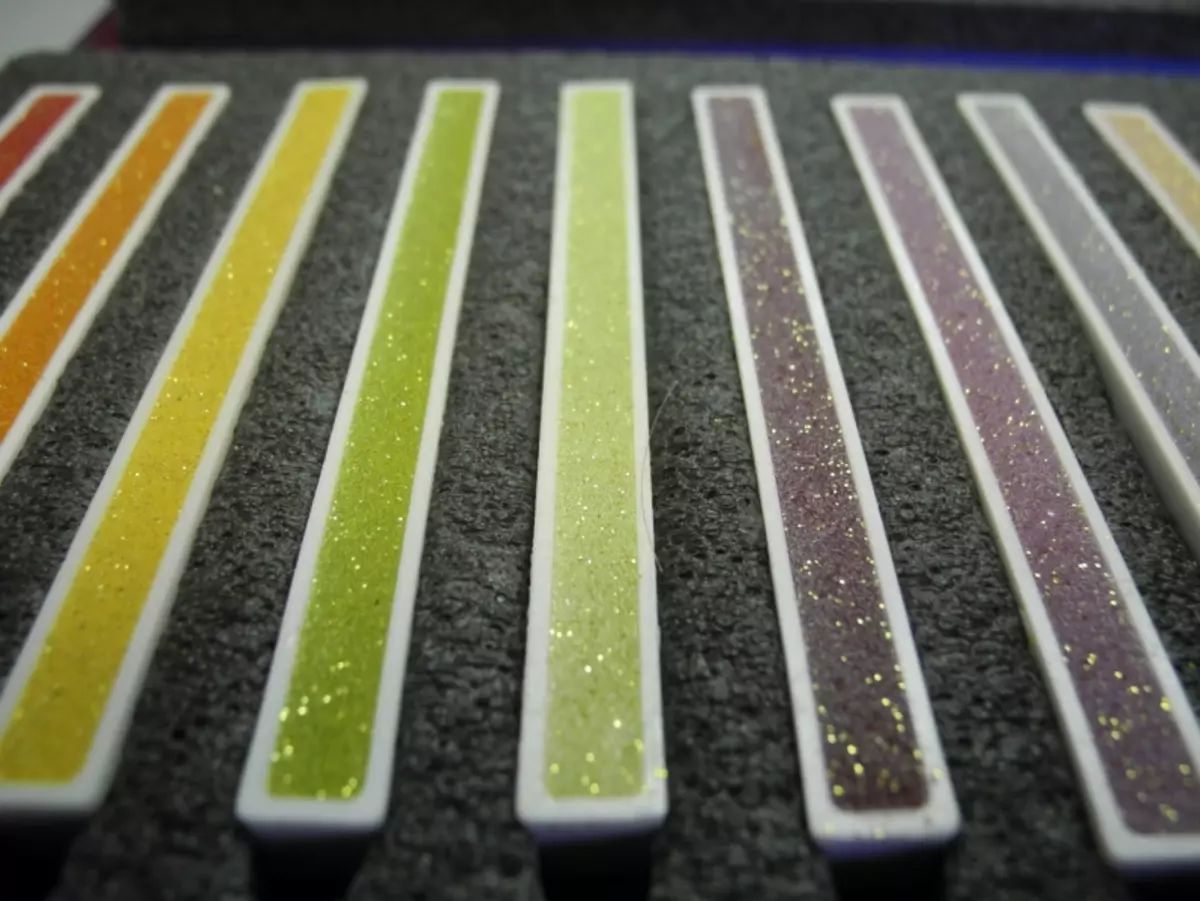
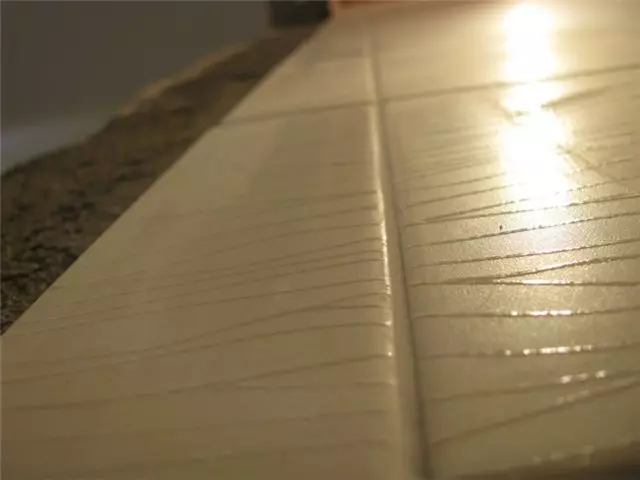
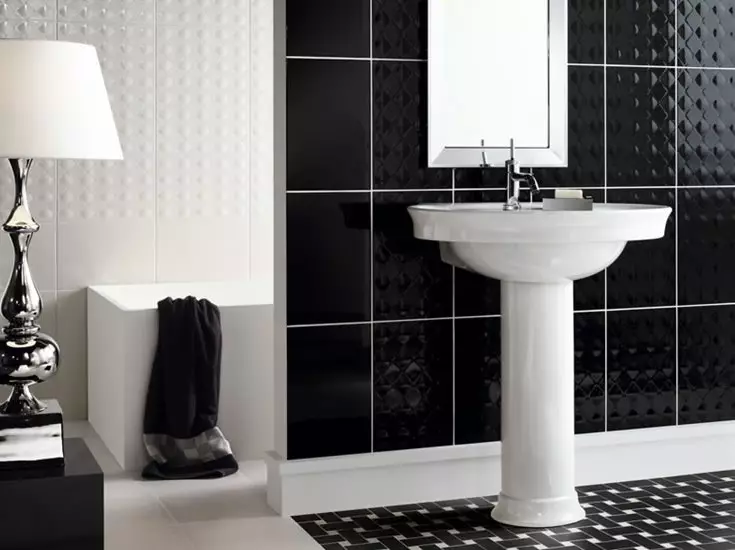
In order not to make a mistake with the choice of tiles, we advise you to take samples used in the bathroom tiles to a construction store.
Colorless or transparent
In the event that you use a combination of several colors in a bathroom decor or decided to buy a mosaic tile, a clear grout is perfect. It is made on the basis of glass and perfect for the grout of the seams of artistic and glass mosaic. A transparent grout is called very conditional - it does not miss the light and takes the color of the slammed tile. However, in itself transparent it is not. This grout is used only on narrow seams with a width of up to 2 mm.
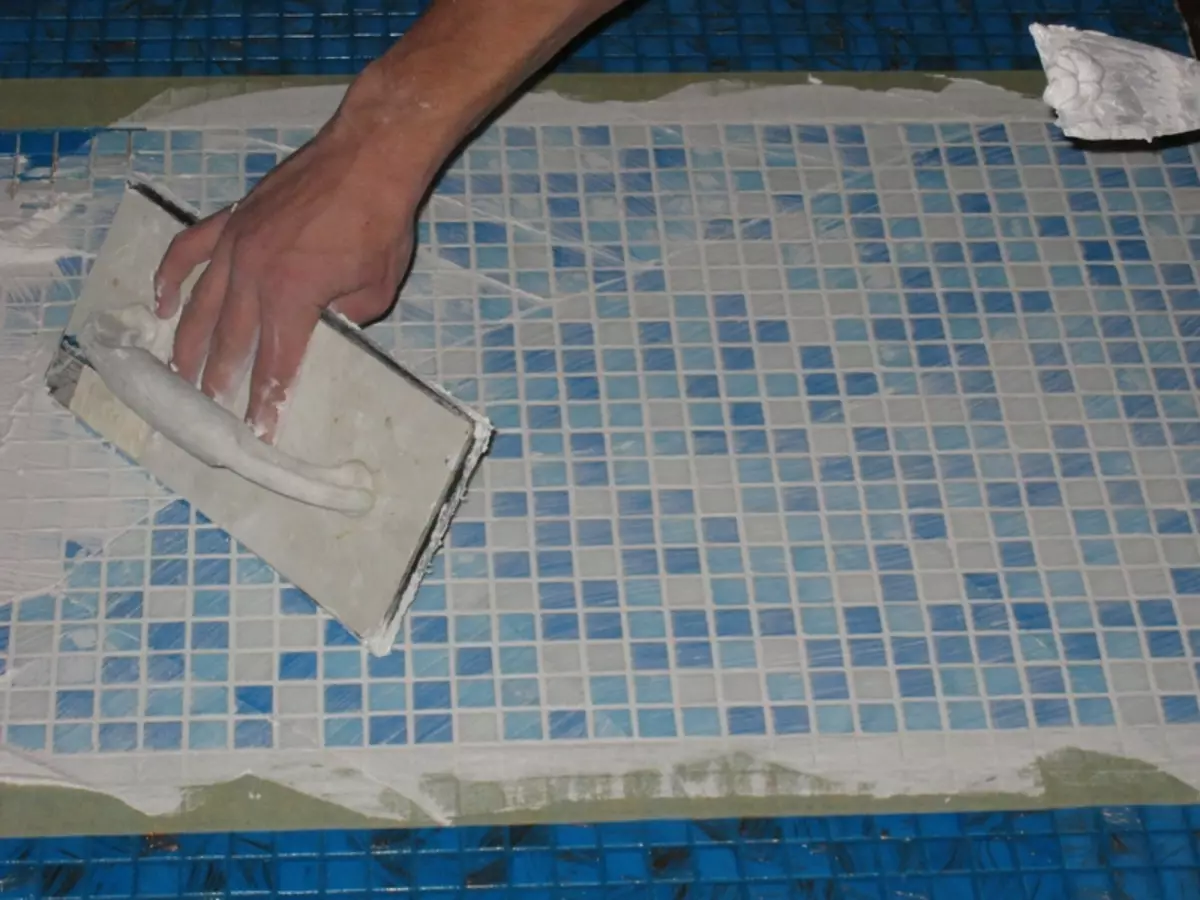
Presenter manufacturers of grouting mixtures
The proper life of the tile depends largely also from the manufacturer's company. Better to trust proven manufacturers. Among the most popular manufacturers, the rates on the Russian market should be noted:
- Ceresit (cement-based mixtures, single-component silicone grouts, two-component grouts)
- Atlas (mixtures on cement and epoxy)
- Weber Vetonit (cement-based mixtures)
- UNIS (cement-based mixtures)
- Litochrome (cement-based mixtures and two-component epoxy mixtures)
- KNAUF (cement-based mixtures).
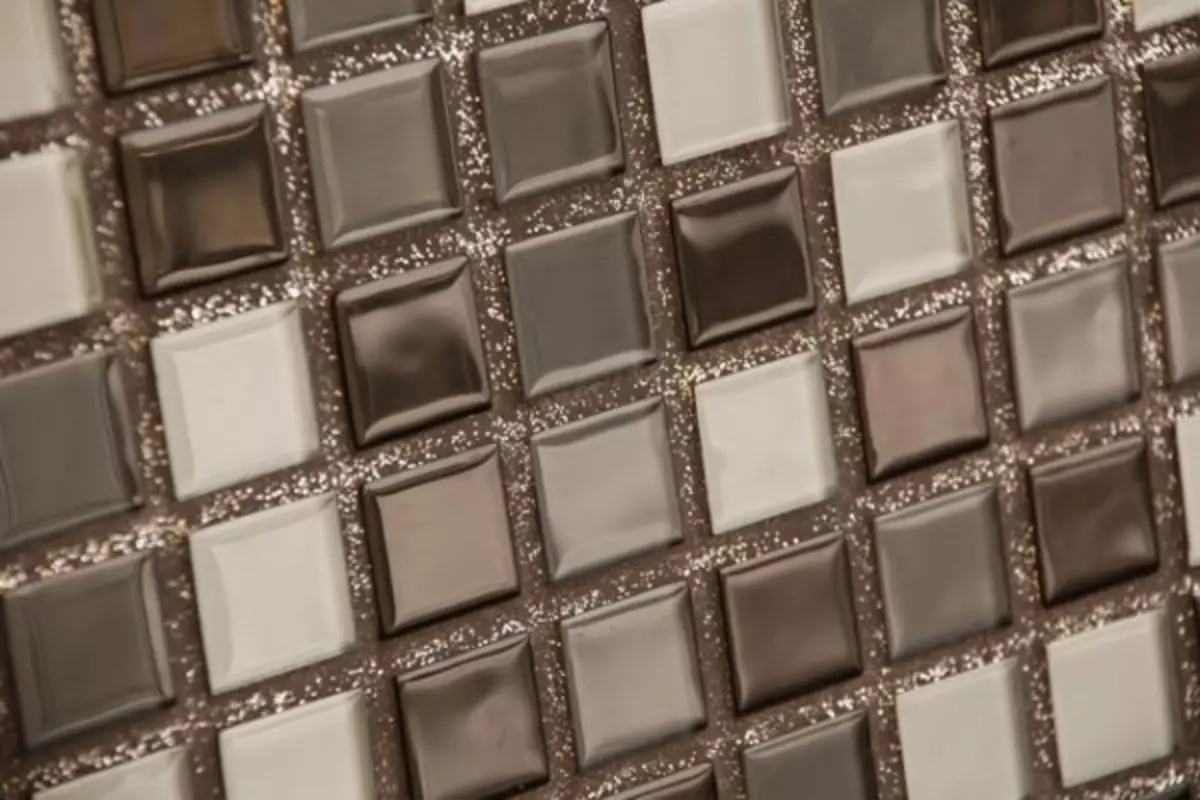
The high quality of the manufacturer's products does not guarantee you a reliable result in case you do not carefully follow the instructions.

Porous tile? There is a solution!
The porous ceramic tile has highly moistive properties, so it is not recommended to use it in rooms with high humidity. In order for the tile to suffer during operation, it is covered with special icing or varnish to increase waterproof. Such a varnish is often used to create decoupar drawings on the tile. Although such a varnish is expensive, it gives a tile a number of very useful properties:
- Protects from stains, moisture, dirt and dust
- facilitates tile and cleaning
- Prevents the process of fading
- gives shine surface.
Silicone grouts are often used to handle seams and joints of ceramic tiles. The processing of seams in this way increases the water-permeability of the seams and prevents the formation of mold and fungus. Works are carried out using a special pistol with a finished composition, which greatly facilitates the processing process of seams.

Sut the seams with your own hands - instruction
During operation, be sure to use rubber gloves, respirator and safety glasses.
- Depending on the type of grout used, open the bucket with the finished grout or add the liquid component into the dry mixture (the hardenifier for epoxy grout and water or water-based silicone for cement rates). Consistency of grouting must resemble a toothpaste.
- Remove crossbars and any extraneous elements from tile seams.
- Fill the seam space by grouting. This uses a special rubber spatula. Pretty the seams on the square are not more than one square meter. It is better to rub the seams first in the direction from top to bottom, and then left to right - the professionals usually work. The denser you fill in the seams - the stronger the tile will hold.
- Clean the seams from the surplus grout. The faster you do it - the easier it will be removed.
- Gradually move on along the entire area of the room.
Article on the topic: Accessories for the bathroom: Aromatic candles and their use in the bathroom
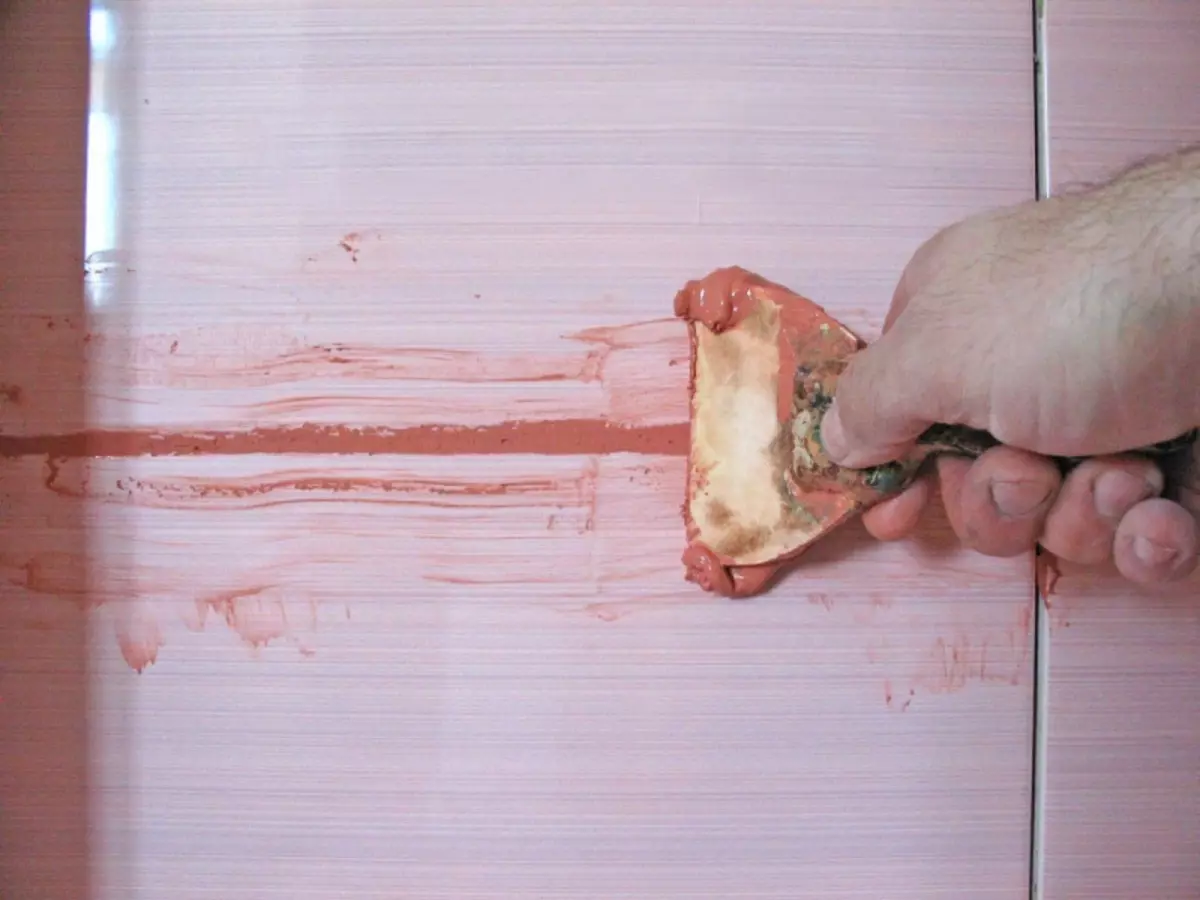
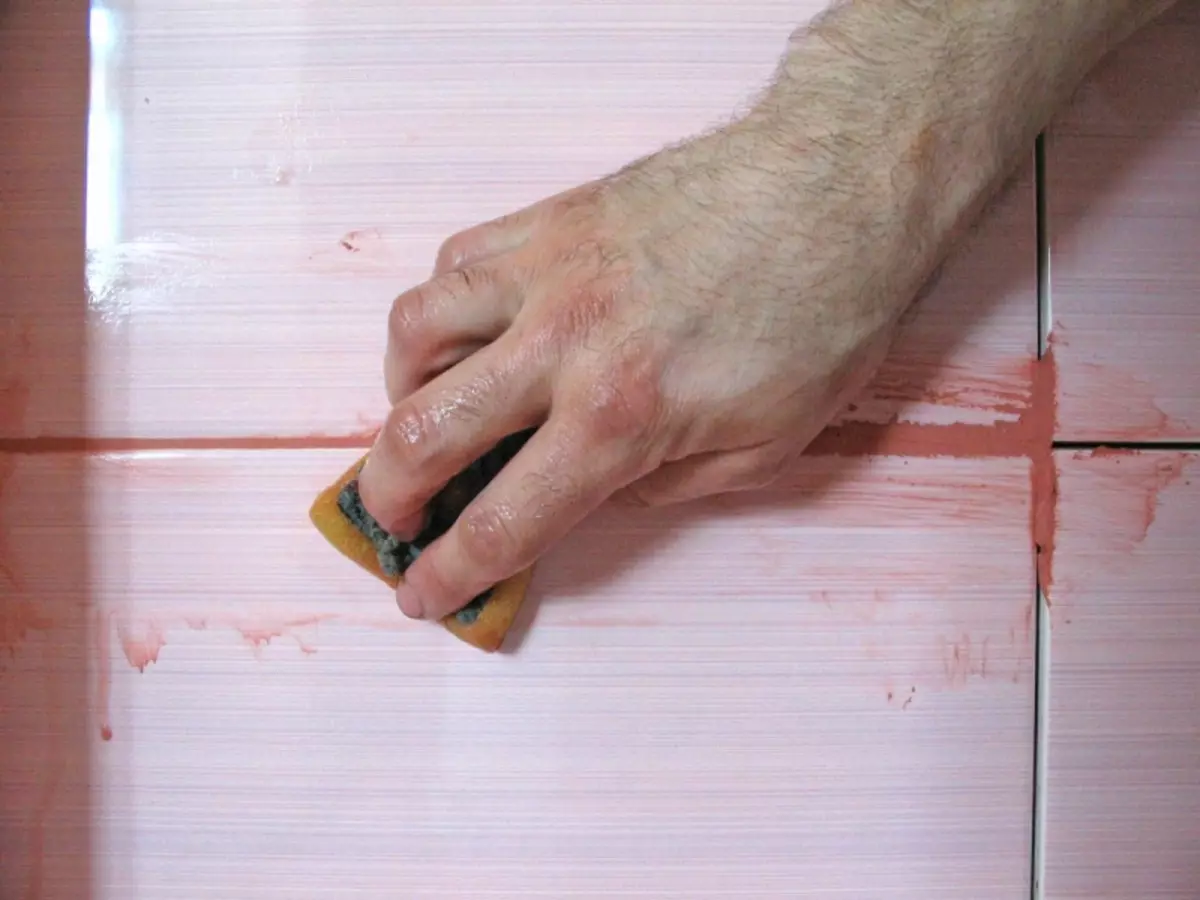
As the grout is dried, the remnants of the grouts on the tile can be wiped with a cloth. Epoxy grout is easier to flush with warm water with a small concentration of detergent.
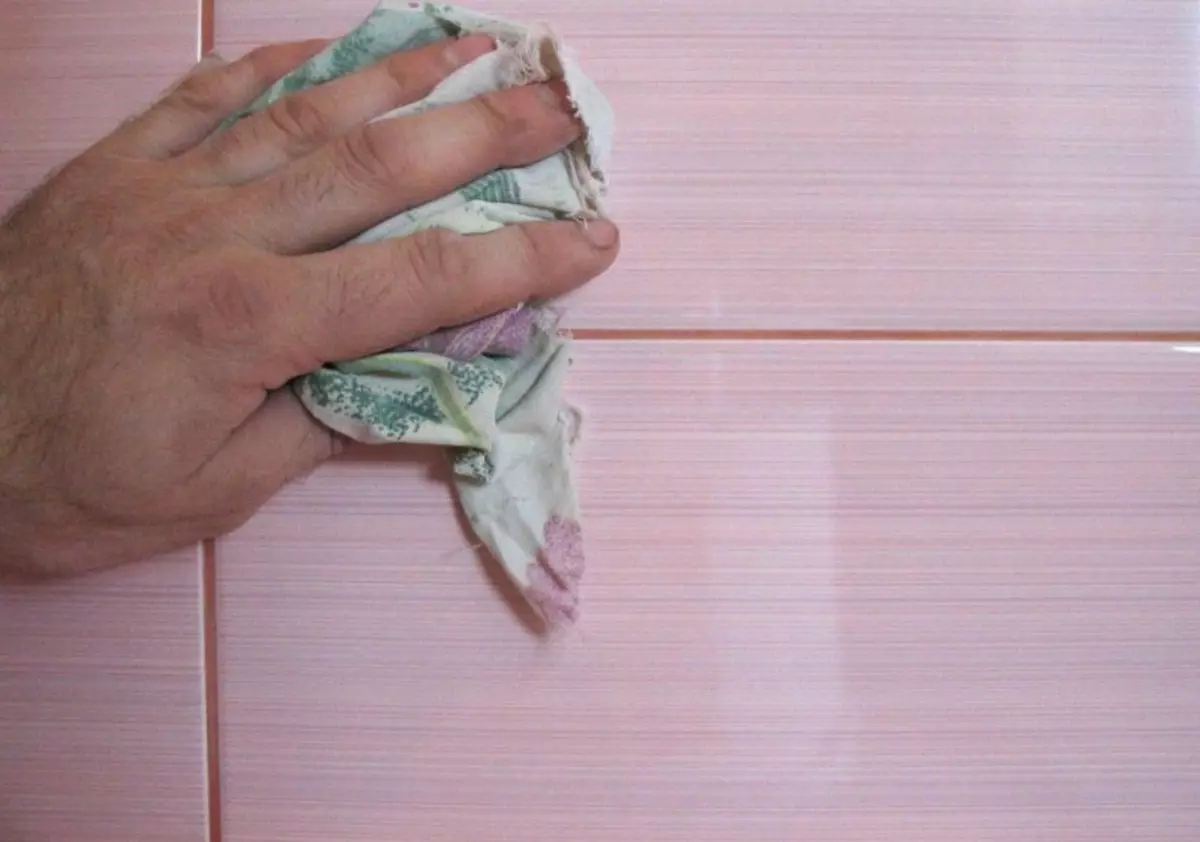
Of course, the process of laying tiles is time-consuming and very troublesome. However, laying the tile on its own, you have the opportunity to save significantly, because the cost of work on the tile laying is sometimes higher than the cost of consumables.
Perhaps you do not go smoothly from the first time, but it is not necessary to fear difficulties. The main thing is to follow the instructions in everything.
